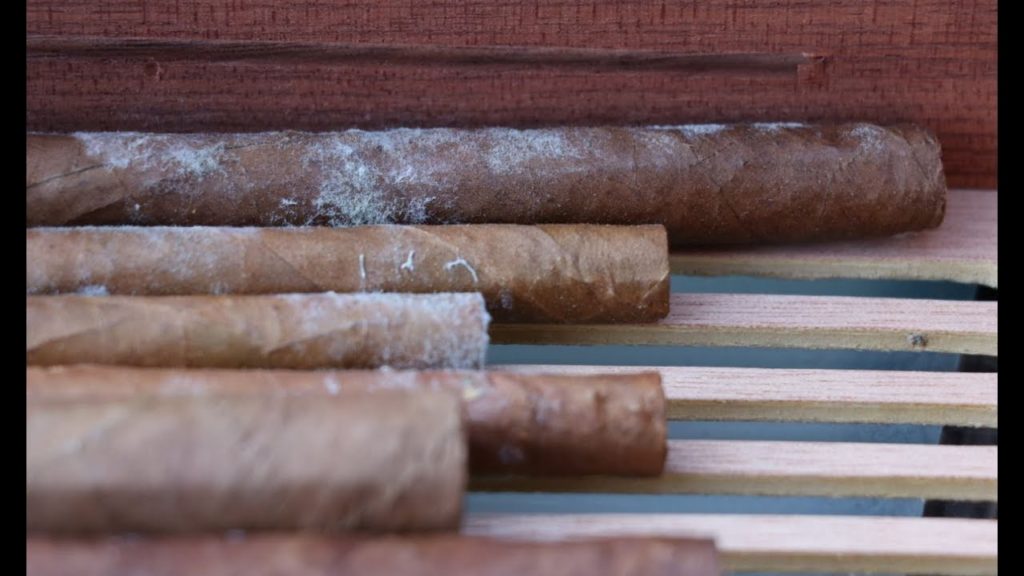Listen to the article
To find white powdery spots is a good sign that your cigars are aging beautifully. The appearance of these white spots, called bloom or plume, means that the essential oils contained in the tobacco have come to the surface of the cigar.
What is Plume?
Plume, also referred to as Bloom, is a powdery white dust found on the surface of your cigar. Plume forms when a perfectly-aged cigar exudes oils from the filler, binder, and wrapper. These oils crystalize on the wrapper creating a hazy light ashy powder. Plume can take months or even years to form.
Cigars that have the foggy, hazy, plume are usually the ones packed in cellophane. Naked cigars often acquire crystalline greyish sparkly specks that generally cover the entire cigar with higher concentration of specks along the veins of the wrapper.
Plume is excellent to have on your cigars. It indicates a perfect cigar and a well-maintained humidor. When your cigars acquire plume, this is the optimal time to sit back and have a smoke. Even though bloom does not improve the taste of your cigar, it just feels great to smoke a stogie at its optimal state.
Not all cigars are capable of developing plume. So, if you don’t find plume on your stogies there is no need to worry. Plume is common on stogies with oilier wrappers like Maduro.
What to Do When You Have Plume On Your Cigar
Plume comes off easy. Just gently wipe it off and check for any stains. If it is bloom, it will not leave a trace. Any stains left on the wrapper mean you have bigger problems. Also, keep in mind that plume never grows on the foot of a cigar. Therefore, if you have anything growing on the foot of your stogie, you have mold.
How can you tell the difference between Bloom (Plume) and Mold?
Mold leaves a stain when it’s removed, but plume comes off without a mark. Plume (or Bloom) is good; essentially this is solidified oil, which usually is a sign that your cigars are aging well. Mold is a sign that your cigars are in too humid an environment.
Difference between mold and plume – Mold can grow on cigars like it can on anything that is too moist. On a cigar, it is a greenish-greyish colour that cannot be scraped off with your nail. Plume, or bloom, on the other hand, is a crystalline greyish white and looks like specks on a cigar. If you rub them or scrape them with your nail – they disappear. Plume is the natural by-product of an aged cigar. Some of the cigars oils are secreted and create those lovely crystals – the sign of a very nicely kept cigar.
The white dusty powder is called “plume” (a.k.a. bloom), and many long-time cigar fans only hope that this occurs to their cigars. Plume is evidence that you have a well-aged and properly cared for cigar. The white dust is crystallized oils from the cigar itself. Plume is harmless, and is typically brushed gently from the cigar when you are ready to smoke it. There is no guarantee that plume will actually occur, even if your cigars are meticulously maintained, but when it does, it signals an opportune time to have a smoke, as the cigar has matured very nicely.
Cigars can get mold, and it is a sign that the humidity and temperature of your humidor is less than optimal. The biggest difference between plume and mold is the color of the residue on the cigar. Mold tends to have a blue/green color to it and will not brush off as easily as the dust-like plume. To be certain, take the cigar to your local tobacconist for inspection and opinion. If mold occurs within your humidor, relocate your unharmed cigars into a new, clean and properly maintained environment. Brush out your humidor, and then wipe it down with a small amount of isopropyl alcohol. Air it out for at least a day and them re-humidify the humidor and re-introduce your cigars. Keep a close eye on your humidor and your hygrometer, as too much humidity will cause the issue again.
Good rule of thumb – if the spots are like a light dusty powder – it’s plume, if its spotty or “furry” – it’s definitely mold!!

